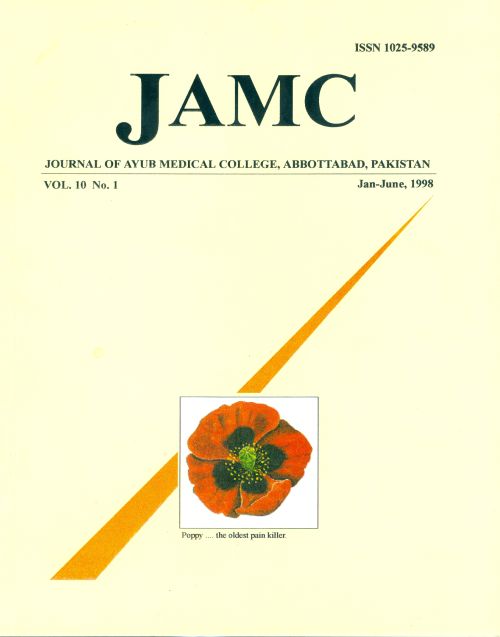A CASE OF MITRAL VALVE VEGETATION THAT COMPLETELY RESOLVED WITH ANTIBIOTIC TREATMENT
Abstract
A 48-year-old male teacher was admitted to thecardiology unit for evaluation of fever of 5 months'
duration. The fever was low grade associated with chills
and night sweats but no rigors. There were no systemic
complaints nor was any dental or other procedure
performed in the recent past. He was treated by many
general physicians with a variety of antibiotics and
antimalarial but there was no sustained response. He was
admitted to the general medical unit as a case of PUO and
thoroughly investigated but except for raised Erythrocyte
sedimentation rate (ESR) nothing was positive. He was
empirically started on Oflaxacin infusion but his fever did
not respond. Later he was started on anti TB drugs but
there was no response upto one month. Steroids were
added to the regimen but still no response.
He had sustained a myocardial infarction in 1986 and
1989 and had a Coronary artery bypass graft (CABG)
done in 1993, and was doing well with it. He was
reevaluated in cardiology with a temperature of 100°F. A
systemic exam only revealed soft systolic murmur at the
apex radiating to the axilla. All the investigations were
repeated and in addition echocardiography was
performed which was not done before. All the laboratory
test was negative again, and the echo showed mitral valve
vegetation. A diagnosis of possible infective endocarditis
was made and as the blood cultures were negative, he was
empirically started on Penicillin and gentamicin but there
was no response upto ten days. Echocardiography was
repeated that showed an increase in the size of vegetation
which was confirmed on transesophageal
echocardiography (Fig-1). The patient was switched over
to Ceftraixime, because of its better potency and broader
spectrum, l gram three times a day (TDS). On the 3rd day
his fever began to respond and he felt better two weeks
after initiation of Cefotaxime, TEE was repeated showing
complete resolution of vegetation. Treatment was
continued for another week and on a follow up a month
later he was found to have totally recovered and returned
to his job
References
Durack DT, Lukes AS, Bright DK. The duke endocarditis service. New criteria for the diagnosis of infective endocarditis.
Utilisation of specific echocardiographic findings. Am J Med 1994; 96: 200.
Birmingham GD, Rahko PS, Ballantyne F. Improved detection of infective endocarditis with transesophageal
echocardiography. Am H J 1992; 3: 774.
Frank P, Frane S. Leten H, et al. Incremental valve of biplane and multiplane transesophageal echocardiography for assessment
of active infective endocarditis. Am J Card. 1995; 75: 1033.
Vuille C, Nidorf F. Weyman AE, et al. Natural history of vegetation during successful medical treatment of infective
endocarditis. Am. H. J. 1994; 128:1200
Downloads
How to Cite
Issue
Section
License
Journal of Ayub Medical College, Abbottabad is an OPEN ACCESS JOURNAL which means that all content is FREELY available without charge to all users whether registered with the journal or not. The work published by J Ayub Med Coll Abbottabad is licensed and distributed under the creative commons License CC BY ND Attribution-NoDerivs. Material printed in this journal is OPEN to access, and are FREE for use in academic and research work with proper citation. J Ayub Med Coll Abbottabad accepts only original material for publication with the understanding that except for abstracts, no part of the data has been published or will be submitted for publication elsewhere before appearing in J Ayub Med Coll Abbottabad. The Editorial Board of J Ayub Med Coll Abbottabad makes every effort to ensure the accuracy and authenticity of material printed in J Ayub Med Coll Abbottabad. However, conclusions and statements expressed are views of the authors and do not reflect the opinion/policy of J Ayub Med Coll Abbottabad or the Editorial Board.
USERS are allowed to read, download, copy, distribute, print, search, or link to the full texts of the articles, or use them for any other lawful purpose, without asking prior permission from the publisher or the author. This is in accordance with the BOAI definition of open access.
AUTHORS retain the rights of free downloading/unlimited e-print of full text and sharing/disseminating the article without any restriction, by any means including twitter, scholarly collaboration networks such as ResearchGate, Academia.eu, and social media sites such as Twitter, LinkedIn, Google Scholar and any other professional or academic networking site.










